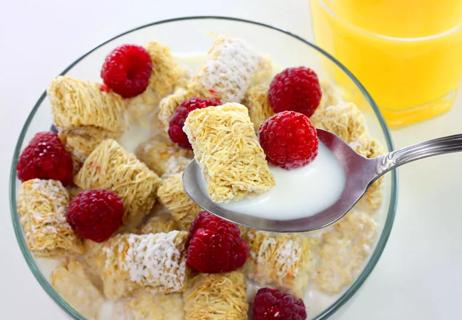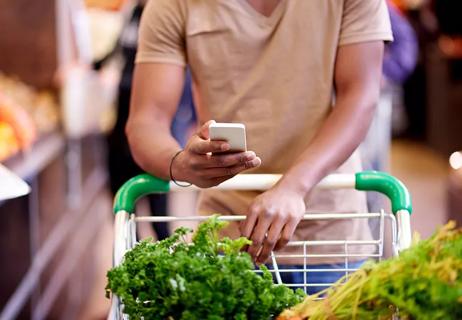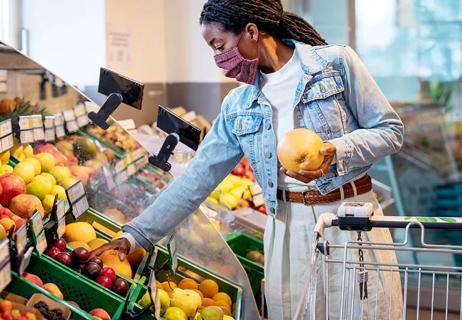4 ways to identify foods that are (actually) good for you

When countless products on grocery store shelves proclaim endless health benefits, is it any wonder we’re confused about what to buy?
Advertisement
Cleveland Clinic is a non-profit academic medical center. Advertising on our site helps support our mission. We do not endorse non-Cleveland Clinic products or services. Policy
Keep four tips in mind to avoid being fooled by false advertising when food shopping:
A good rule of thumb is to look for foods with no more than five ingredients. A long list of ingredients should tip you off that a food is highly processed.
For example, the twin cream-filled snack cakes America loves have 37 ingredients. But only one — banana puree — is actually food. And it’s near the bottom of the list.
Processed foods may also list sugar and starch by different names — there are more than 60 different names for sugar alone!
For instance, one serving of a popular brand of colored corn puffs cereal has 7 teaspoons of sugar listed four different ways. (Not to mention red and blue dye, and other chemicals.)
Also, when you don’t recognize the name of an ingredient, or when it’s in Latin, chances are it’s not real food.
You wouldn’t find maltodextrin, polysorbate 80, or butylated hydroxyoluene in your cupboard. You wouldn’t cook with them or sprinkle them on your food. So do you really want to eat them?
Another way to put it: Would you find these ingredients in your grandmother’s cupboard?
What your grandmother ate was all pretty much organic, grass-fed and locally grown. She didn’t have preservatives or additives. She just had food.
Advertisement
That’s what we want to get back to: aiming for the fewest possible steps from field to fork.
Research shows that the least healthy foods are advertised the most heavily.
For example, you’ll see five different health claims for a popular oat cereal: terms like heart-healthy, cholesterol-lowering, gluten-free, 100% whole grain, and no artificial flavors or colors.
Whole-grain oats are good, as are no artificial flavors or colors. But the other main ingredients are sugar and cornstarch (which is basically another form of sugar). What’s more, a single 1-cup serving contains 20 grams of carbohydrates!
Despite the fact that the cereal is high in sugar and starch, it’s low in fat, so it got the heart-healthy label. But new evidence clearly points to added sugar, and not dietary fat, as the culprit in raising heart disease risk.
And while the same cereal contains oat bran, it provides just 1 gram of soluble fiber per serving — not enough to lower your cholesterol.
You may think fresh fruits and veggies are the most nutritious. But frozen fruits and veggies actually have the edge.
For example, frozen berries — picked at the point of pure ripeness in the peak of the season, then flash-frozen — are amazing. You won’t find mold growing on them, and their nutrients won’t degrade.
The same is true of frozen vegetables. They may not taste as great as a hand-picked tomato or bunch of broccoli from your garden. But frozen veggies haven’t been transported long distances like the fresh veggies at your store.
So their quality is less likely to degrade, and their nutrient levels are higher. Another plus: Frozen organic fruits and veggies are cheaper than fresh organic fruits and veggies.
Because canned fruits and vegetables often contain added sugar or salt, they’re your least nutritious option. But produce canned or jarred in its whole form is fine. (Just make sure that cans are BPA-free.)
Not all man-made products are bad. But you want your food to be as close to its original state as possible.
So canned tomatoes containing water and salt are OK. Sardines canned in olive oil and salt are fine.
Here’s an easy test: If you covered the front of a box, package or jar with your hand, then read the ingredients list, would you still know what it was?
Again, if a food has a super-long list of ingredients, or comes in weird shapes, sizes or colors, think twice about putting it in your body.
In America, manufacturers turn wheat, corn and soy into white flour, soybean oil, high-fructose corn syrup and corn extracts like maltodextrin. These find their way into hundreds of thousands of food products.
Advertisement
Processed foods now represent about 60 percent of our diet. Is it any wonder we struggle with obesity, diabetes, heart disease, cholesterol issues, high blood pressure and other chronic illnesses?
When you pay closer attention to the foods that find their way into your grocery cart, you’ll start to feel better.
Contributor: Mark Hyman, MD
Advertisement
Learn more about our editorial process.
Advertisement

An occasional shopping spree can boost your mood by distracting you from stressors and pumping your brain full of ‘happy hormones’

Signs you’re a compulsive spender include lying about purchases, buying things you don’t use and treating shopping like a hobby

Information on serving size, calories and nutrients can help you make healthy choices

Whole-grain options low in sugar and sodium form the foundation of a good-for-you breakfast

From planning ahead to resisting bargains, these tips could also save you money

All it takes is a little planning

Avoid bringing bacteria home

This starchy root vegetable is a staple in many global cuisines — but it has to be prepared correctly, or it can cause serious concerns

Start having sex about 72 hours before ovulation, then at least every other day during your fertile window

Attachment theory suggests that your earliest relationships shape connections throughout your life

It isn’t a recognized mental health disorder, but research shows that problematic social media use can negatively affect your mental health, self-esteem and sleep